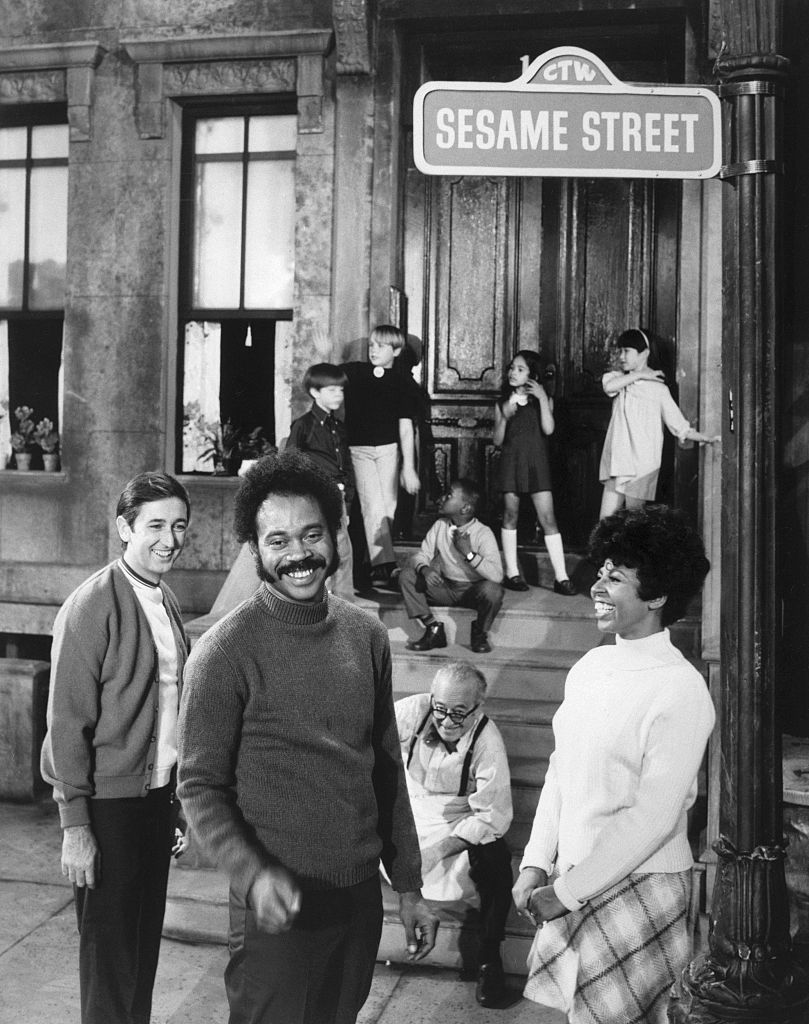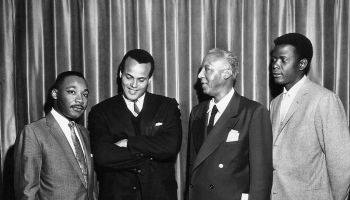
Source: Bettmann / Getty
Sesame Street’s San Diego theme park, Sesame Place, became viral news after users disclosed alleged discrimination against Black children. Many fans don’t realize that Sesame Street was originally created for Black and Brown inner-city children. Read more about Sesame Street’s origin below.
One viral video of a Sesame Street muppet character dismissing two little Black girls has caused an eruption online. Many social media users are outraged, and since then, they have shared other videos from previous encounters at the popular theme park based upon the influential world of Sesame Street.
https://twitter.com/_TheShawn/status/1549057620044038145?s=20&t=t5if_ECX28omxJgni5OdXw
Sesame’s Place is the nation’s only theme park based entirely on Sesame Street, and it’s the first theme park in the world to be designated as a Certified Autism Center. The entire framework for the Sesame Street brand was rooted in dismantling minority communities. The show was actually first created for Black and Brown inner-city children.
One thread created by Twitter user, @AfricanArchives, discusses Sesame Street’s origin. The first tweet asks, “Did you know ‘Sesame Street’ was originally created for black and brown inner city kids? A THREAD.”
Researchers learned that children were spending a lot of time watching television and the media became their babysitter. The statistics proved to be more alarming for inner-city children, whose parents were forced to spend countless hours at work, forcing their children to be exposed to longer hours of mindless programming.
The thread goes on to share how one particular psychologist became invested in children’s education. Llyoyd Morrisett, widely regarded as the father of Sesame Street and Vice President of Carnegie Corporation with Ph.D. in experimental psychology from Yale University found that inner-city children were behind by months to middle class children in kindergarten and the gap grew wider as the years advanced.
Another user credited an article, which shares the forgotten tales of how Black psychiatrists helped create Sesame Street.
Morrisett partnered with Joan Ganz Cooney, an activist and producer at the time, to help teach young children through television. Cooney is responsible for a study titled, “The Potential Uses of Television in Preschool Education,” which was used to convince the Department of Education, The Carnegie Corporation, The Ford Foundation and private donors to give $8 million to establish the Children’s Television Workshop, which is now coined the Sesame Workshop.
Joan later reached out to to a writer & TV producer named Jon Stone, a Yale University graduate experienced in children’s television. He shared her passion for social activism and agreed to do the show because of its specific focus on educating black and brown children.
Jon came up with the idea to create a set that mimicked an inner city, New York neighborhood. He even named the show “Sesame Street,” which became so impactful that an actual street in New York City was renamed after the series.
When Sesame Street first debuted in 1969 it was a really Black show. There was soul and funk music, a Black cast and lots of “jive talk.” Unfortunately, the integrated and diverse nature of the show didn’t reach Southern stations. They even removed Sesame Street from its airwaves all together, because of growing complaints from parents.
The thread also shares that a state commission in Mississippi refused to air the show because of the integrated cast. The main characters, Gordon and Susan, were Black, as well as, their adopted son. After their refusal became national news Mississippi reversed their decision.
Another fun fact that isn’t included in the thread details how pivotal Holly Robinson Peete’s father, actor Matthew Robinson, was to the original cast. Robinson portrayed Gordon.
He used used a mixture of proper English and street slang so that Black children could relate to him and he could create a more natural connection between him and the intended viewer at that time. However, some of Robinson’s political views created conflict within the room of the writers.
One famous account of this occurred when the CTW decided that Gordon’s wife Susan was to go and get a job as a nurse. Robinson felt that another key problem in Black neighborhoods was the fact that women were in the workplace and not staying home to make sure their children were not getting into trouble, which was a direct contradiction to the 1970s feminist values that the CTW was beginning to incorporate into Sesame Street. As a result, when the episode aired, even on the screen Gordon’s reluctance to accept Susan as a nurse managed to seep through.
Robinson left Sesame Street in 1972 to pursue his passion for writing, although he continued to do segments as Roosevelt Franklin until 1974.
Check out the thread to learn more about the popular children’s series initial roots below:
















